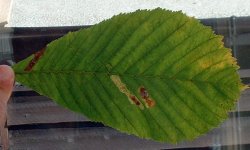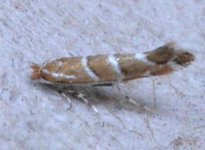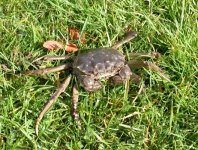Ivan
Warning, do not cry wolf, wolf too loudly, there are alot of chemical companies and tree surgery firms only too willing to make a buck out of something which spoils our visual green
but has not once been proven to killed a tree. Fact. Full Stop.
Yes, Ken that does look like it. The Collar neck dove population has stabilised and found it's niche. Let this do so also, as the alternative is Dimilin alias 'Agent Orange' for the moth world. What goes up, can drift around and always also comes down.
The Polish example would have been interesting to see, complete defoiliation can occur,
but often as not there is a secondary reason. The picture is confused here in Vienna because salt damage is very similar to an untrained eye, and people associate the browning with the leafminer, and next spring on goes, or as is more often the case now thank goodness, on went the chemical, past tense. Whereas the reality is the salt trace elements deter the leaf miners, but the browning only occurs later in the year, and by then everyone has forgotten the tree didn't have the miner in spring, and then look on the self made devastation that the miner never could make.
When you talk to your local council people, tell them it could be a visual problem, but for the sake of all sanity and the enviroment, leave the bloody chemicals in the shed, and preferably in the chemical firms one at that. Secondly send them to our institute for practical impartial advice, there are alternatives to Dimilin, in the form of phermone traps. And thirdly, if the tree dies, it was going to die anyway from what ever fungus it had.
Take care of your local environment, there are more things going on than meet the eye, and if you value your moth counts, find out what chemical, or method of treatment they propose to use and when, eg at what level of infestation. GB has a chance to learn from Europe, and lesson number one is stop any knee jerk reaction before it starts, step back from the problem, and take a bigger overview of things.
We are not losing trees from it
Tea box session over :scribe:
Cheers
Jim
P.S. BTW remember Horse Chestnut is none native to Britain, and is so called because the nuts were used as winter fodder. Are people so interested in saving a none native tree at the cost of other British native species? It isn't even native to Austria. You can fell every chestnut tree in Britain at no loss to the environment, and replace with native cherries for visual flowering. Sorry got back on the soap box there.







